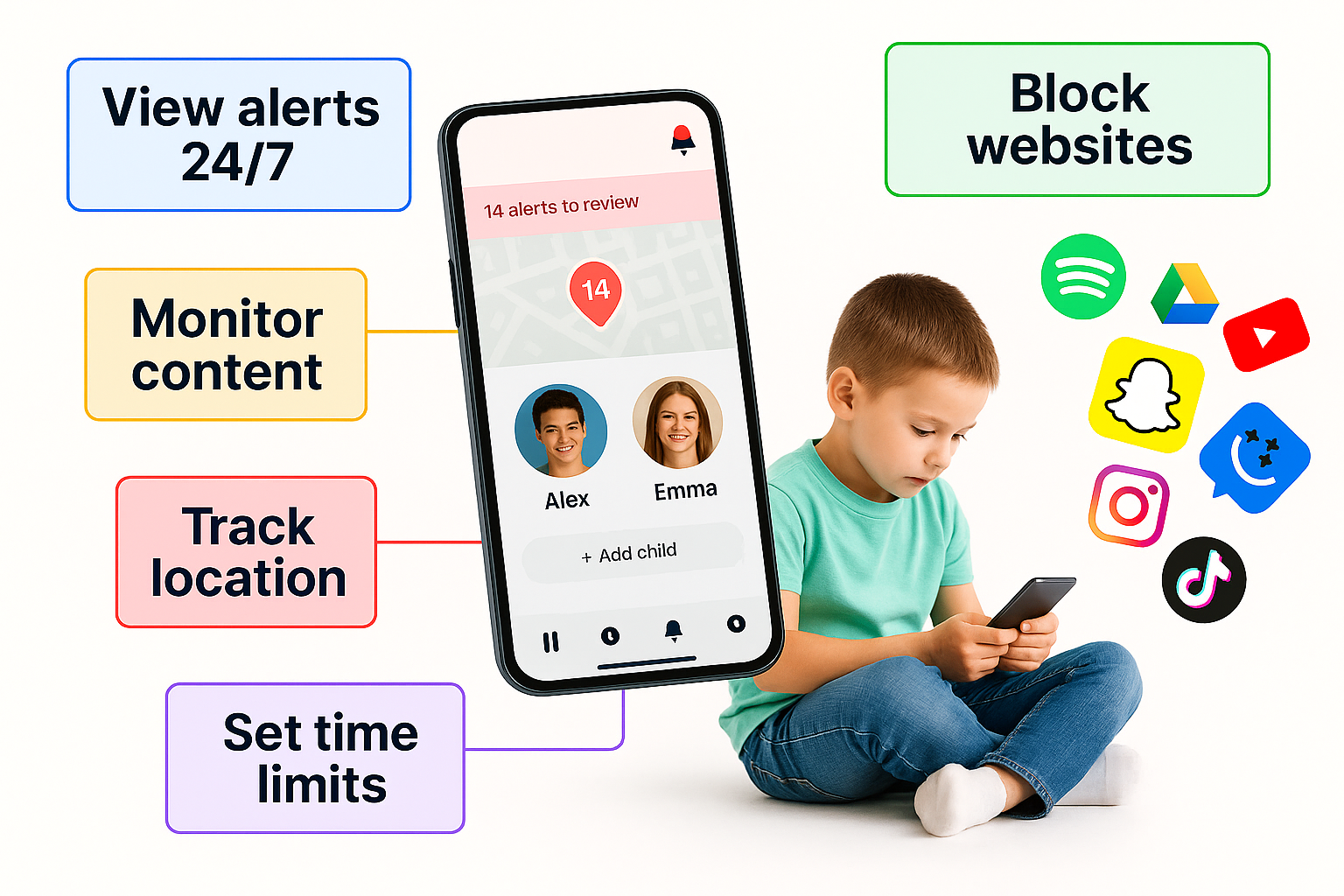💭 From Anxiety to Autonomy: Why Kids Feel Pressure Online & How Smart Phones Can Help Them Find Balance
If your child seems restless, anxious, or “always online,” you’re not imagining it.
Behind the selfies, chats, and constant pings lies something much deeper — digital pressure.
Today’s kids face a new kind of stress: the pressure to reply fast, post perfectly, and stay constantly available.
But here’s the twist — with the right kind of phone setup, technology can actually teach balance, not break it.
🌐 The Hidden Source of Digital Anxiety
Kids don’t fear missing homework — they fear missing messages.
A recent Family Mental Health Institute study revealed that:
- 71% of kids feel stressed when they can’t check their phone.
- 63% feel anxious about not replying fast enough.
- 54% compare themselves to others online daily.
This pressure creates a “digital tension loop” — an endless cycle of checking, comparing, and worrying.
It’s not the phone itself — it’s how it’s structured.
🧠 What’s Really Happening in Their Brains
Psychologists call it reward conditioning.
Every like, message, and notification gives a micro-hit of dopamine — the brain’s “feel-good” signal.
Over time, this trains the brain to crave the next ping, turning normal phone use into emotional dependency.
Children, whose brains are still developing self-control, are especially vulnerable.
But that same brain wiring can be redirected toward healthy digital habits — using structure, positive reinforcement, and calm technology design.
📱 How Parental-Controlled Kids’ Phones Reduce Stress
Instead of banning devices, the key is to build phones that protect peace — not provoke anxiety.
Modern parental-controlled phones for kids make this simple with features designed to reduce pressure:
✅ No social media apps or unfiltered web access — fewer comparison triggers.
✅ Quiet Mode for evenings — no late-night messages or notifications.
✅ Limited messaging contacts — only approved family and close friends.
✅ Scheduled downtime — teaches kids that being offline is normal, not scary.
✅ Transparency dashboards — parents see activity without invading privacy.
When tech becomes calm, kids become calm too.
🌱 Teaching Balance Through Boundaries
Children don’t naturally know how to set limits — they learn it by example.
That’s why guided independence works better than strict bans.
Start small:
- Talk about why phone downtime matters.
- Encourage journaling, reading, or creative play during “offline hours.”
- Let kids help decide when to enable Quiet Mode — it builds ownership.
- Reward consistency, not perfection.
This approach turns digital restriction into digital resilience.
💬 Real Parent Story: “She Sleeps Better — and Smiles More”
Sophie, a mom of two, noticed her 10-year-old daughter becoming anxious every evening, constantly checking group chats.
When Sophie switched to a Bark Phone with built-in limits, she saw a complete transformation.
“At first she resisted. But after a week, she said, ‘Mom, I actually like when it turns off — my brain stops buzzing.’”
Sometimes, balance isn’t about more control — it’s about less noise.
🧩 The Psychology of Digital Peace
Dr. Elena Ford, a child psychologist specializing in digital behavior, puts it perfectly:
“When children learn that being disconnected doesn’t mean being alone, they discover self-control — the foundation of emotional intelligence.”
Technology, when structured well, can actually teach emotional regulation — helping kids separate validation from real connection.
Your child doesn’t need a world without screens — they need a world where screens don’t control them.
The right parental-controlled kids’ phone turns technology into a tool for calm, not chaos.
Because true freedom for kids isn’t endless access — it’s peace of mind in a connected world.

